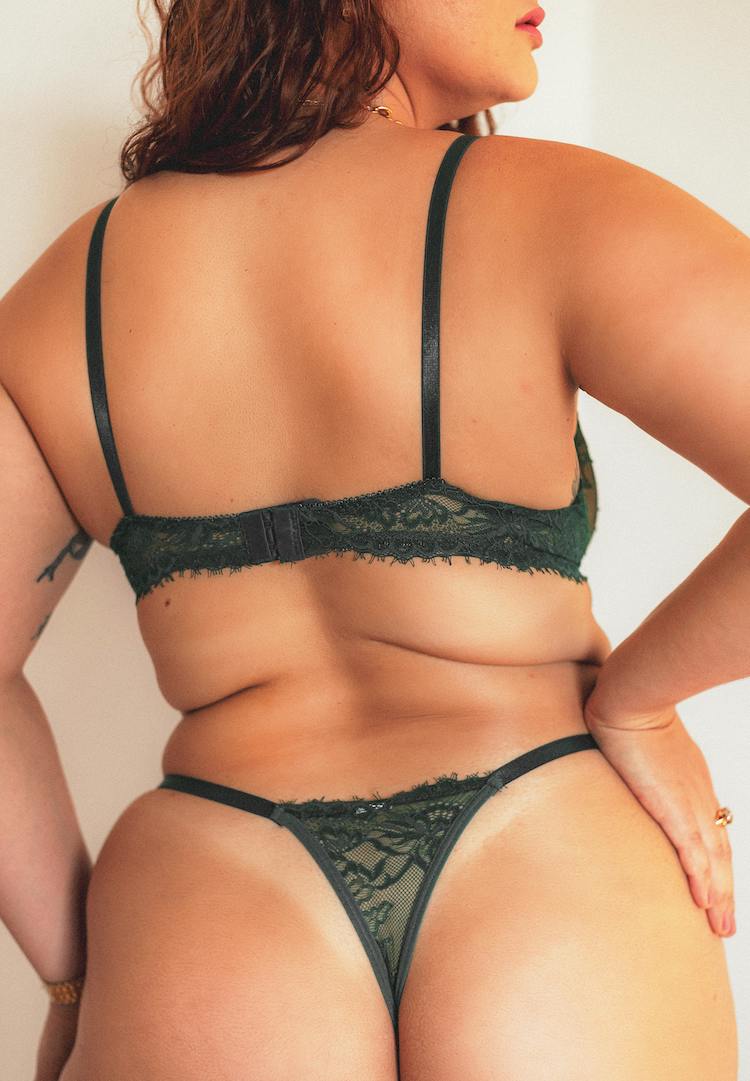Isn’t it time we reclaimed the camel toe?
WORDS BY HANNAH COLE
What is a camel toe and why do we dislike them so much?
When you hear the words ‘camel’ and ‘toe’, what is your response? Do you shudder repulsively? Do you instantly look down, stretch the length of your jumper and think, ‘Please, not me?’ Defined as ‘crotch cleavage’ on Urban Dictionary, the camel toe is an unfortunate and sexist rite of passage for many females.
Looking for more ways to break down stigmas associated with women’s fashion? Head over to our fashion vertical.
Biologically speaking, it refers to the three-toed look your pants get around the crotch when the outline of the labia becomes noticeable. High-waisted jeans, leggings and bike shorts are all major culprits and labia-hugging bottoms. It’s scrutinised and looked upon with disgust. But shouldn’t a camel toe be cute?
Where did the camel toe come from?
As a child of the ’90s and early noughties, I grew up smothered by the allure of celebrity, tabloids and shock jocks. Gossip was at its peak. As Matt James, founder of Pop Culture Died in 2009, recently told Gossip Time (a big Substack newsletter recommendation), “Every day was a new scandal. Every day was a new career-ending meltdown.”
We absorbed ugly relationship drama, shaved heads, rehab stints and wild nights that went awry; we lapped it up with a hunger for more. Image scrutiny was also part of this toxic package. If Britney looked sluggish and undone in a tracksuit, we questioned her sanity.
Tara Reid’s nipple slipped out on the red carpet in 2004, quickly relegating her as the laughing stock of paparazzi and tabloid readers alike. And then there was the repetitive, dreaded appearance of the camel toe – the ultimate fashion faux pas, according to women’s magazines and news sites.
And after a quick Google search, it’s evident that the camel toe’s undesirable status remains. We’re taught that one should never reveal even the slightest hint of a vulva, or else you suffer the most extreme embarrassment. You subject yourself to scrutiny, open yourself to public comment and unwanted remarks from strangers. And is there any coming back from that low?
What’s wrong with a little labia cleavage?
Whether due to the prevalence of gossip magazines or simply societal pressures, I became aware of the camel toe early on, much like my peers. In primary school, we would mock those with highly-hitched pants (and only wear ours super low-rider, à la Paris Hilton), even more so if that crevasse was on show. We were products of the media, and the theme continued into high school.
Instead of dressing for personal style and comfort – or identifying with our femininity – we protected ourselves and our vulvae. We bundled them up and took great care to examine every angle in the mirror before leaving the house, god forbid anything nefarious were left on show.
Even now, celebrities are slaughtered for any hint of crotch cleavage, whether it’s Sofia Richie, Sophie Monk or Rosie Huntington-Whiteley. With athletic wear the new norm – thanks to COVID, working from home, and our overarching obsession with wellness culture – it’s a phenomenon that impacts even the richest and most beautiful.
Like a moth to the flame is the camel toe to stretchy, nylon pants our preferred breeches of choice. Listicles abound, outlining the ‘bike shorts that will never, ever give you camel toe’ or ‘camel toe erasing leggings’. Seek thick waistbands and fabrications, stick to dark colours, and avoid any centre seams, they say. Not to mention the products and tips recommended to cover-up: tissues, pantyliners, camel toe guard (yes, sadly these exist).
Is it time to celebrate the camel toe?
Subliminally (or not so in some cases), our aversion to the camel toe sends a harmful message: that it’s shameful to have a vagina or hint at its existence in any way. We learn to celebrate sisterhood and our womanhood, but only up to a certain point, restrained by the confines of society’s boundaries. Meanwhile, men are lauded and salivated over when ‘the bulge’ is on show. They do the very least (aka wear a pair of grey sweatpants), and the crowd goes wild.
My desperate guzzling of feminist content in my early twenties offered a welcome, refreshing take. The FUPA (fat upper pubic area) and camel toe were public points of discussion. Although they supposedly ‘repel’ men, the discussion of and reference to this traditional faux pas was a welcome starting point in addressing the stigma and encouraging comfort within one’s body. After all, some of us are more likely to sport a camel toe than others; every vulva is unique.
Finding my sense of style and confidence has been a long and evolving process. I traditionally avoided anything that highlighted the bumps in my hips or any sign of belly, let alone my camel toe. It’s only recently, nearing my thirties, that I have finally grown into my style. IDGAF is the general attitude here; if I like, then so be it.
And, I’ll put it out there – I don’t mind the occasional camel toe. I live for bike shorts (long live the bike short!) Some days I fear others’ glaring eyes and worry I am drawing unwanted attention to my femininity. Victim-blaming has deemed every outfit decision be well-thought-through and considered. But on other days, I am brimming with power and passion.
You can point at me, pap me, mock me. It’s intimidating to walk out there, proud and loud, and beam with confidence, but it’s time we finally #freethecameltoe. Sometimes a front wedgie is just comfortable, you know? And anyway, I think a camel’s toe is cute.
This article was originally published on July 20, 2022.
Need more convincing that camel toes should no longer be considered a fashion faux pas? Head here.










